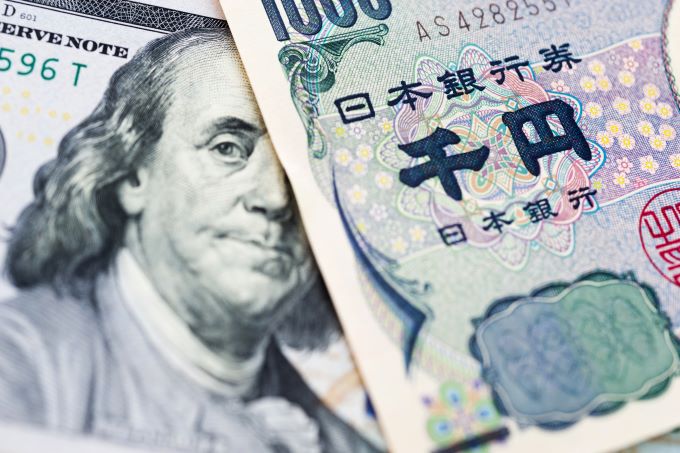The US dollar rallied against the Japanese yen during the early hours on Friday, but we have seen a certain amount of resistance in this market, as this pair continues to be very noisy. That doesn’t surprise me, because it has been very choppy for months, even though we at one point got a bit of a “false break out.” The candlestick for the Friday session looks like it is going to close positive, but I also recognize that the 200 Day EMA has offered significant resistance, and therefore it suggests that perhaps the market isn’t quite ready to take off to the upside, and we may be stuck in the same consolidation for a while.
The most active trading sessions for the USD/JPY take place in Tokyo, London and New York. Day traders look mostly to the London and New York sessions but those trading wishing to trade on the Asian markets can do so between 2400 GMT - 0900 GMT.
USD/JPY has traditionally been the most politically sensitive currency pair, with successive U.S. governments using the exchange rate as a lever in trade negotiations with Japan. For day-to-day trading, the most significant feature of USD/JPY is the heavy influence exerted by Japanese institutional investors and asset managers.
The USD/JPY has recently dipped below 101.00. Read the Daily Forex USD to Japanese Yen forecast and get access to the most up-to-date statistics, analyses and economic events regarding the USD/JPY.
Most Recent
USD/JPY bounces from 146 support, with resistance at the 50-day EMA and 149. Bulls eye 151 if broken, while sub-145.50 would signal downside risk.
The US dollar initially rallied against the Japanese yen during the trading session here on Tuesday to reach towards the 149 yen level but then pulled back significantly to break below the 200 day EMA at least for part of the session. The 50 day EMA also offer support. So now that we have, it has shown itself to be a little bit more resilient. I think you've got a situation where traders just aren't willing to go too deep into the market as the non-farm payroll uh comes out on Friday. That being said, I think you still have to favor the upside due to the swap differential. The interest rate differential still favors the US dollar regardless, and if we can break above the 149 yen level, I think we have a real shot at going to the 150 yen level, possibly even 151 yen. Anything about that then becomes buy and hold. I have been buying dips along the way for several months now. And I think that is going to be how I continue to play this market. Just simply collecting swaps to get paid, to hang on to the trade and then collecting my gains as they occur.
Top Forex Brokers
USD/JPY breaks out on strong U.S. GDP data, with 149 acting as support and traders eyeing 151–152 as bullish momentum and a Golden Cross build.
The US dollar rallied toward 149 yen resistance on Wednesday, signaling potential for a breakout toward 151 or a continuation of range-bound movement.
The US dollar has gone back and forth during the course of the trading session here on Tuesday as we are hanging around the 200 Day EMA, but perhaps more importantly, we find ourselves in the middle of an overall consolidation range that has been like a pair of brick walls since the beginning of August.
The US dollar initially rallied a bit during the early hour here on Monday, but you can see we have struggled a bit. And at this point in time, this looks like a market that's hanging around the 200 day EMA, which of course is an indicator that a lot of people use to determine the overall trend. And it's worth noting that the 200 day EMA right now, it's flat.
The US dollar extended gains against the yen on Thursday, consolidating between 146–149 as traders await the BoJ’s decision that could trigger a breakout or sharp reversal.
The US dollar drifts slightly lower against the yen, with USD/JPY stuck between 146.50 support and 149 resistance ahead of the Fed’s key rate decision.
Bonuses & Promotions
The US dollar edges higher against the yen, testing the 200-day EMA as markets await the Fed decision to see if USD/JPY can break above ¥149.
USD/JPY remains rangebound near 146.50 with bullish bias intact, supported by interest rate differentials and anticipation of Thursday’s US CPI release.
USD/JPY bounced back above the 50-day EMA after testing ¥146.50, with the pair likely to stay choppy until the Fed’s September 17 meeting.
USD/JPY slipped on Monday but remains range-bound between 146.50 support and 148.50 resistance as traders await Fed and BoJ signals.
USD/JPY pushes higher toward 148.5 resistance, with bulls supported by rate differentials, but upcoming US jobs data may shape the next big move.
The USD/JPY bounced from 147 support and the 50-day EMA, with the pair ranging between 147–149 and a breakout targeting 151 yen in the near term.










